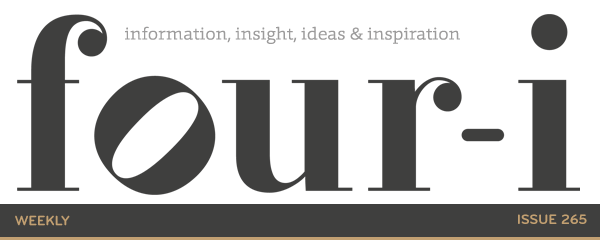
It ain’t what you do it’s what you do before you do it.
 I’ve quoted Professor Robert Cialdini hundreds of times, mostly as a consequence of working with him and his team in the UK to translate his book: ‘Influence’ into a highly effective training programme titled: ‘Principles of Persuasion’. ‘Influence’ now has sales of over 3 million copies and is available in 33 languages, but today I’m going to cite his most recent, major work – the book ‘Pre-Suasion’ and in particular one method that will assist many of you who are experiencing pressure on fees.
I’ve quoted Professor Robert Cialdini hundreds of times, mostly as a consequence of working with him and his team in the UK to translate his book: ‘Influence’ into a highly effective training programme titled: ‘Principles of Persuasion’. ‘Influence’ now has sales of over 3 million copies and is available in 33 languages, but today I’m going to cite his most recent, major work – the book ‘Pre-Suasion’ and in particular one method that will assist many of you who are experiencing pressure on fees.
In the very first chapter, Bob describes how a consultant he knows was getting knocked down by 10-15% each time he quoted for a project. Feeling uncomfortable about building in a negotiating margin, instead before revealing his ($75,000) fee he changed his presentation to state, “As you can tell, I’m not going to be able to charge you a million dollars for this.” The first time he did this, the prospect client looked up and replied, “well I can agree to that!” and subsequently went on to agree the contract without negotiation on the fee. Understandably, he tried it the next time and the time after, all with the positive result of winning the contract at the full fee.
Now, neither Bob Cialdini nor I are suggesting that all that’s necessary to charge a premium is to make a joke of your own fee, however getting in first with a significantly larger sum than the actual one charged is a proven technique of “pre-suasion” – here’s why:
Pre-suasion is built on the concepts of anchoring and priming. Anchoring is an attentional bias, where we automatically respond to the first piece of information offered. For example, a house for sale at £440,000 seems cheap when offered after another at £510,000. Priming builds on this by deliberately offering the more expensive option first to create the “it’s a lot cheaper” response. I’ve cited a very literal example, i.e. two different properties with a 16% price difference, but it also can be applied far more subtly. Some of the examples quoted include:
- If you want people to try something new and untested, ask them if they consider themselves adventurous.
- If you want people to be results orientated, show them pictures of a runner winning a race.
- If you want people to make a thorough and considered assessment, then show them an image such as Rodin’s, ‘The Thinker’.
Let’s apply this idea to a market appraisal where you anticipate you’re likely to come up against a cut-price agent. Sitting down at the table to begin the presentation you have a folder of comparable unsold/unlet properties and on top is a picture of ‘The Thinker’; You don’t reference the image, it’s just there. In another folder you have a selection of comparable properties that have sold/let and top of this pile is someone breaking the tape as they cross the finish line of a marathon. Again, you don’t draw any attention to it, you just let it sit there.
During your preamble, you ask the client “are you a risk taker and if so, is your home something you’d gamble with?” My guess is the vast majority of people will answer “no”. After concluding your introduction, you might suggest that whilst you walk around the property the client might like to study the two sets of “comps” you’ve brought, but only reveal later that one set is “competition” (i.e. properties that have not yet been sold/let) and the other set are “comparables”, (i.e. properties that have found a buyer/tenant).
According to Cialdini’s research and as bizarre as this might sound, the combination of these things is far more likely to cause the prospect to feel uncomfortable going with a new and largely unproven estate agency model than a solid and reliable one (i.e. you). This careful use of linguistics has been proven by many studies, for example when scientists San Bolkan and Peter Anderson approached people and asked them to take part in a survey, just 29% agreed. However when they approached another similar group and started by asking “do you consider yourself a helpful person?” the response rate to the survey request increased to 77.3%!
Like nearly all of the Principles of Persuasion, they need to be carefully practiced and rehearsed in order to have maximum effect. But what is very clear is that it’s what you do before you do what you do that has the greatest influence and if that results in being able to charge 2-3 times what the discounters are getting, then I’d say it’s worth the effort.
Join over 6,000 property professionals, including leading estate and letting agents and receive information, insight, ideas and inspiration (four-i) from top estate agency coach Peter Knight, straight to your inbox every Monday. Join now
Agree or disagree with the views expressed in this newsletter? Share the article and your views on social media today.
Follow our social channels here: